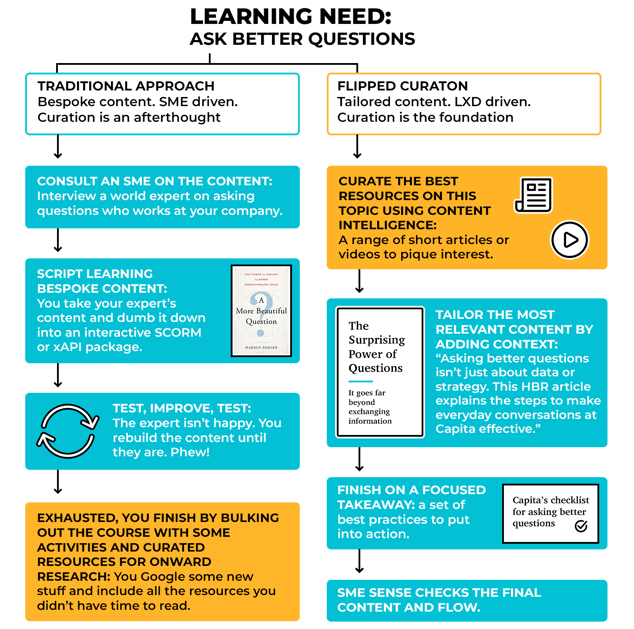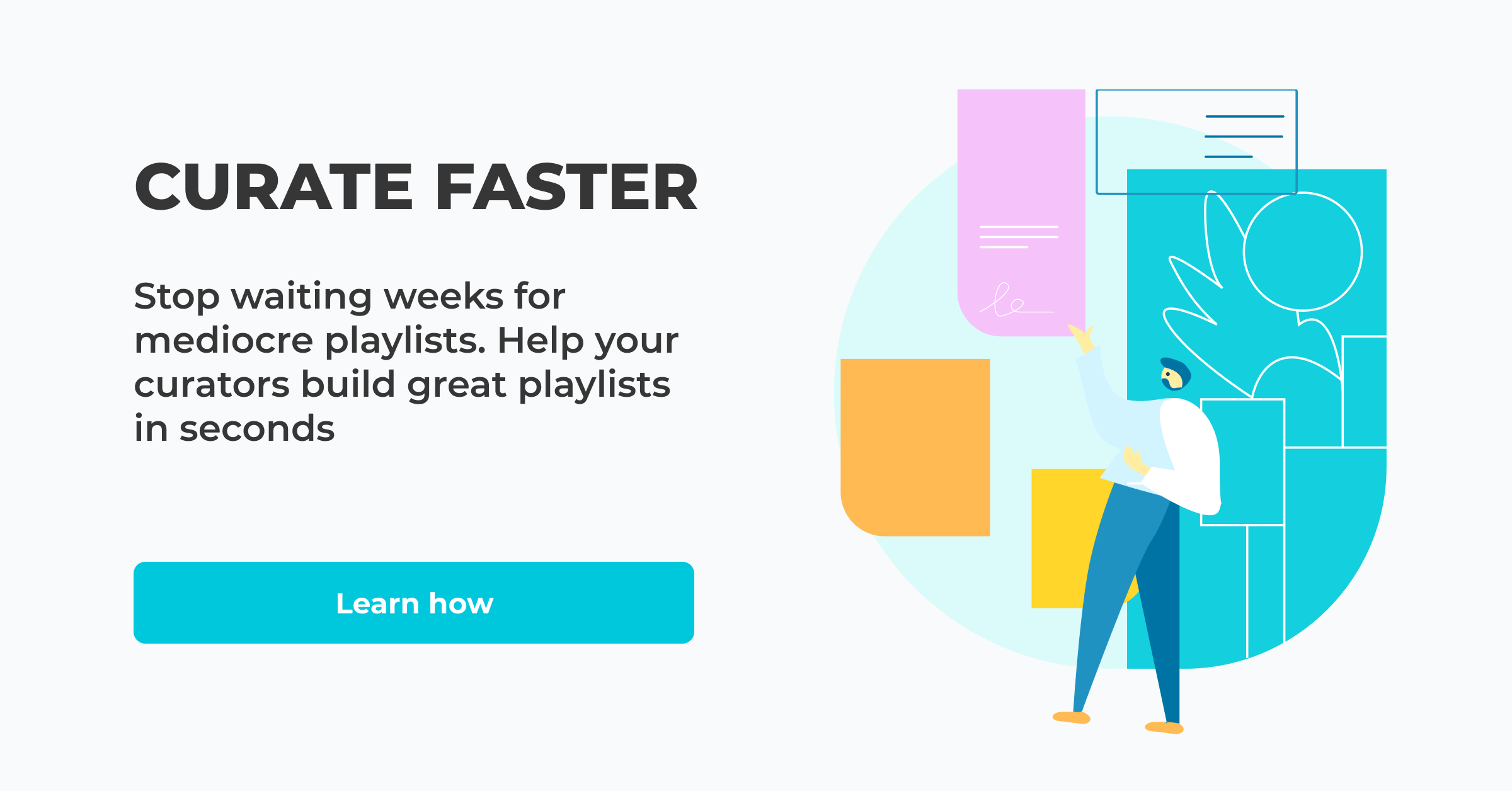Disclaimer: Capita and Filtered are teaming up to help Capita clients audit their learning ecosystems and speed up curation using Filtered’s Content Intelligence technology.
Some of the most impactful content experiences – great books, movies and documentaries – are the result of a painstaking curation process. Like Mark Twain said, “There is no such thing as a new idea.” Great authors read a lot, assess the zeitgeist, identify their own position and mix it with existing takes to create something new. Great creations rest on curation.
For many organisations curation is currently an add-on, not a core focus in the design process. A lengthy research process is dismissed on the grounds of tight scope and content. Instead, most courses rely on a designer translating the knowledge of subject matter experts.
Once this new creation is accomplished and finally approved, designers pull together a set of follow-up resources and activities. Often, this curated list is made of interesting stuff the designer didn’t have time to fully explore or include in the core learning programme content.
Welcome to curation as an optional extra, always in the shadow of the main content.
This method may be a good approach when the best source for learning design genuinely is an expert in the field who has access to lots of hard-to-find research material.
And let’s not forget how poor UX in learning management systems has often made it desirable to build a whole new interface that opens in a new window, away from the LMS-ey horror.
But the world is changing.
- There is now an abundance of world-class, short-form digital content addressing the knowledge and skills we often target for learning design (such as leadership, growth, collaboration and wellbeing) plus the Content Intelligence technology to locate that content easily.
- The UX of our systems has evolved: there are still some dinosaurs lurking around but in many learning systems it’s now easy to build an attractive-looking pathway without having to launch the user into a bespoke and specially developed content package (in effect: a microsite for your learning programme)
These changes have unlocked a more efficient way to get to higher impact learning design: flipped curation.
Instead of accepting SME time as a bottleneck, flipped curation puts technology-enabled curation at the front of the design process.
It leads to impactful learning pathways that contextualise the best content in the world to effectively support your organisation’s learning needs. (Filtered’s Marc Zao-Sanders and Georgie Peake write about these pathways in HBR, here).
Here is how the flipped curation approach compares to the use of curation in traditional learning design. In essence, you:
- Curate the best resources on a topic first
- Tailor the most relevant content by adding context
- Finish on a focused takeaway
In more detail...

Flipped curation is not new to learning design. Great academics and scientists, like great authors, do it effortlessly (like this famous example on competitive strategy)– but it is only just beginning to emerge in corporate learning.
And within the past two years, global brands have deployed teams of learning professionals who put curation at the forefront of programme development. Right now they tend to rely on asking content library vendors to shortlist curated content rather than employing dedicated technology. That process can still take a few weeks to turn around.
Filtered clients, benefiting from technology that surfaces the right content in seconds, have already successfully flipped their curation model. ECITB, an industry skills board, is doing it to build great learning paths for its Digital Passport at a lightning speed, nimbly converting free articles by experts into animated videos to put the key points in the right context.
Flipped curation means learning designers can:
- Eliminate the SME bottleneck using Content Intelligence
- Spend more time adding business context to curated content
- Spend less time developing content and building new interfaces
- Build and iterate your learning experiences much faster
How will you flip the script on curation to create the next great learning experience?


